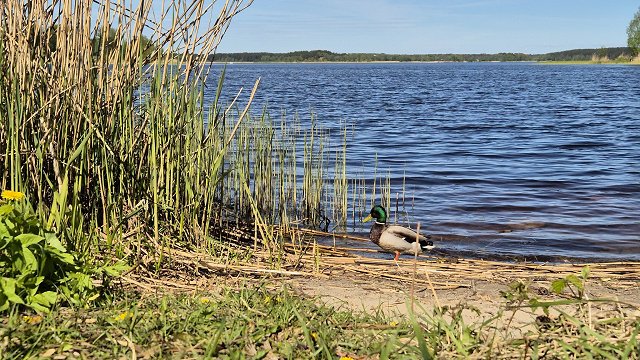While Russian royal gardens were teeming with decorative lingonberry plants, it is thought that Catherine the Great was the first to grow these plants for the berries alone, finding them a good spice for meat. Lingonberry plants were collected from around St. Petersburg and planted in the empress' summer garden.
The first selected variety was created relatively recently. Koralla, the first cultivated variety, was selected in 1969 in Holland, with German breeders following suit and creating a number of new varieties. A man walking his dog found a lingonberry plant with particularly big berries and created the Erntesegen variety, which became very popular in Germany. After, this plant culture arrived in Sweden, Poland, the US and Latvia as well.
It seems impossible to list all the health boons of this berry. They contain A and C vitamins, help against the cold, fevers, stomachaches, diabetes and other diseases. Squashed berries can be used to treat wounds. Lingonberry leaf tea is a diuretic and has antiseptic qualities.
A series of plant wonders
Latvians like to think they are more in tune with the seasons than most. With that in mind, we'll be guiding you through the next few months with this series on the plants you can encounter from autumn onwards.
These autumn berries are easy to cultivate. They have to be watered once a week in a dry summer, and for the plants to renew the old stalks have to be cut time and again. Should there be frost in May, it can be countered by watering, which keeps the top-soil warmer. If some of the flowers are lost, prepare for a smaller harvest, but one can expect to collect at least 2 kilograms of lingonberries per square meter.
In Latvia, as elsewhere in the world, breeders cultivated the plant using wild lingonberries, selecting the best shrubs. If they are cultivated by cuttings, creating a new variety takes about seven years, while seeds take up to twice as long as the plant has to be selected against diseases.
Alfreds Ripa and Biruta Audriņa are the only people breeding lingonberries in Latvia. Since their retirement, no new breeds have been selected hereabouts. The two have partaken in cultivating new varieties since 1977 in the Salaspils Botanical Garden.
Ripa created the Talsiniece (Talsi native) breed that produces big dark red berries. Once cutting can produce up to 125 grams of lingonberries a season.
While Biruta Audriņa has cultivated Jūlija (July), an early-harvest variety. It winters well and is resistent to diseases. There are lingonberries in different hues of red, but in 1988 Latvian horticulturists created Rubīna lāse (Ruby Drop), which has berries the color of rubies.
Ripa has created a number of hybrids, such as the Tīna (Tina) lingonberry-cranberry hybrid, which produces very large berries with an impressive harvest, up to four kilos can be produced per square meter.





























